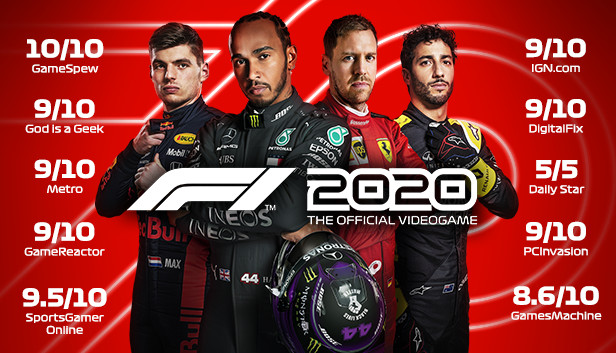
This guide will help players get familiar with, who first bought the game of this wonderful series.
Introduction
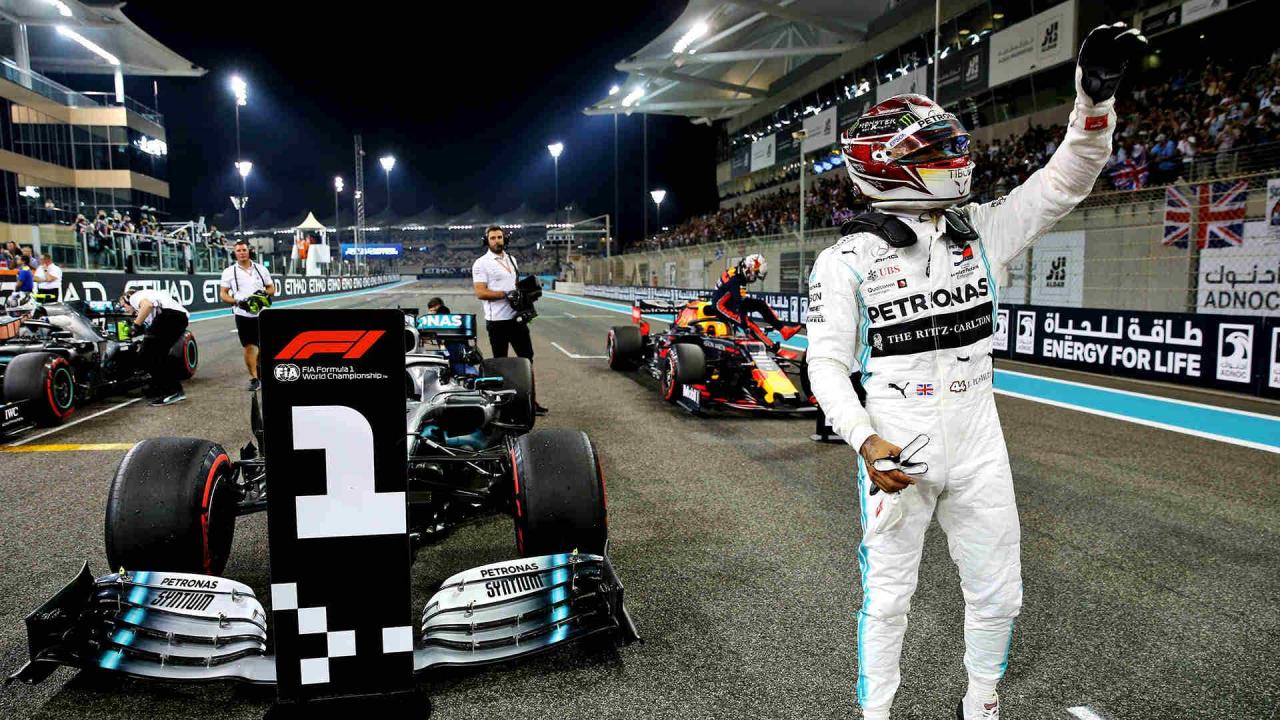
Tire types
At each Grand Prix, each team has access to two dry-weather tire formulations. If conditions are not humid, drivers must use both compositions during the race.
“S” – soft tires, “M” – medium tires, “H” – tough, “I” – intermediate and “W” – wet tires. C1 means compound 1, where C1 is the hardest, and C5 – the softest.
Soft (Super Soft) – These tires contain the maximum amount of oil and provide excellent traction.. Hence, this is the fastest tire set. They are very deteriorate quickly and won't last long. (Red / S)
Average (Soft) – These are the optimal tires for most of the race.. They provide perfect balance between speed and durability. (Yellow / M)
Hard (Hard) – These tires provide very little grip, but serve for a very long time. Usually used for strategies with 1 stopping. (White / H)
Intermediate (Intermediate) – Option between hard and completely wet tires. For use, when the track is slightly wet. (Green / I)
Rainy (Wet) – These tires have full treads and should only be used when it rains or when the track is really wet. Will wear off very quickly when used in dry conditions. (Blue / W)
During the race weekend, each rider has access to 13 dry weather tire kits, 4 intermediate tire kits and 3 wet tire kits.
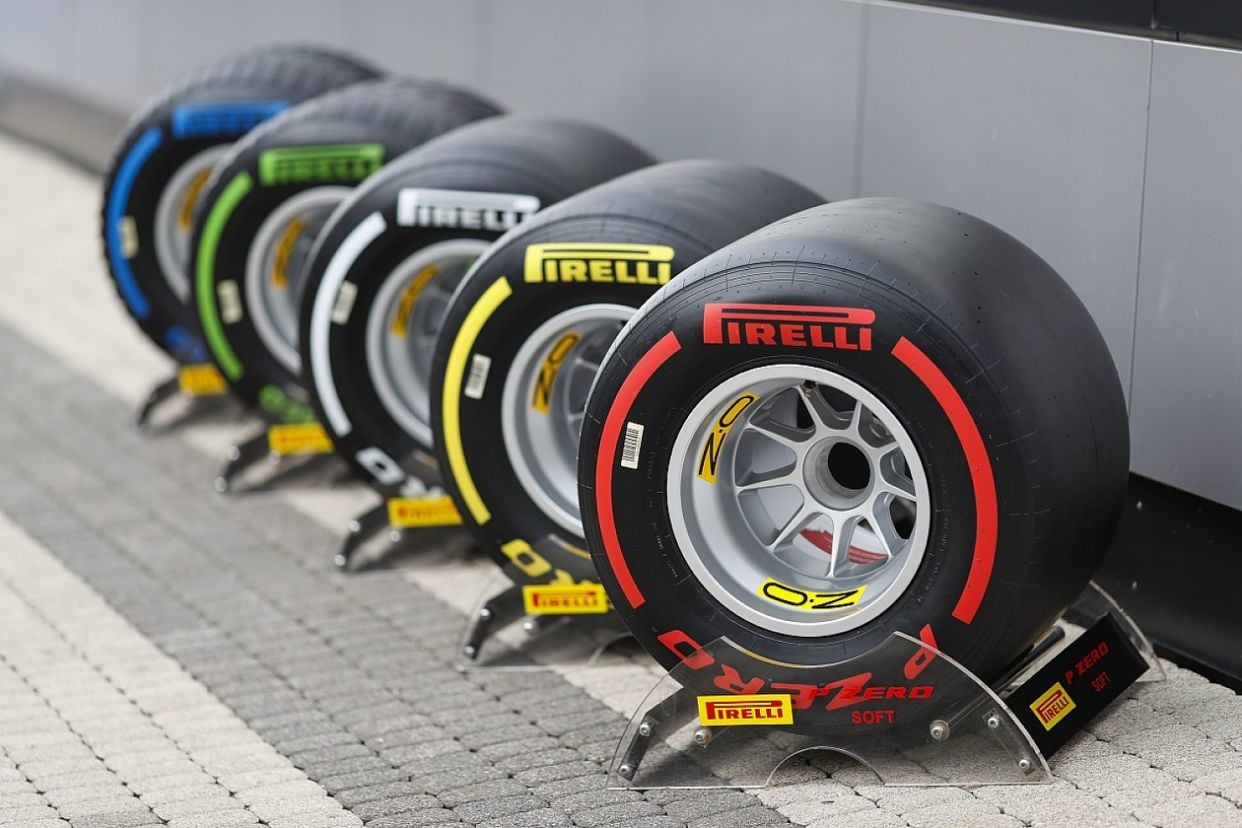
MFD (Multifunctional display)
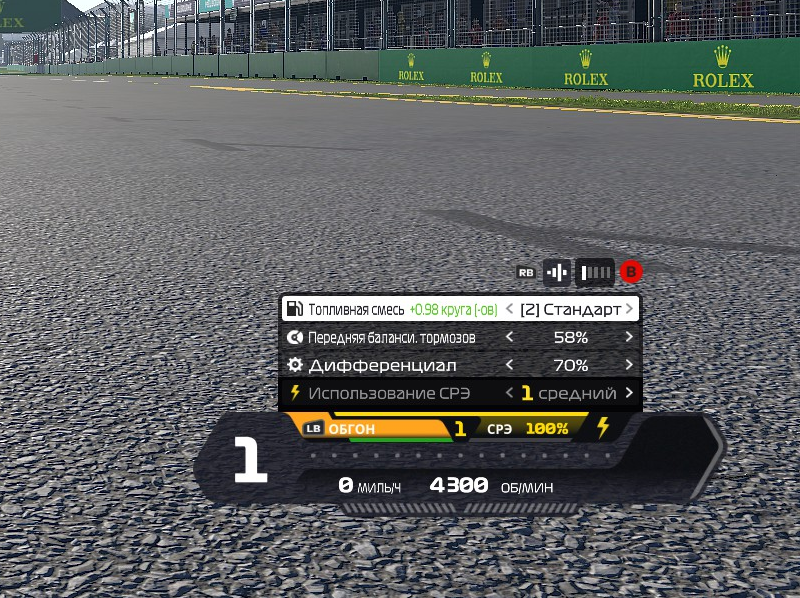
Don't even mind, if you are new, stick to the standard. You can start changing the mixture, as soon as you master the more important basics of the game. Fuel mixtures basically mean that, how much fuel does the engine use, the more fuel it uses, the faster the car.
- Enriched – This is the maximum amount of fuel, which you can use in the race, and you will want to use it when trying to outrun your opponent, defend or when you are trying to create a gap. Don't need to use it for too long, otherwise you will run out of fuel before the end of the race, it may cost you victory, so don't risk it.
- Standard – This mixture will be used for most of the race.. She's light on the engine, does not consume more fuel, than predicted, most cars ride on it.
- Unenriched – Slowest fuel mixture, usually used only if, if you do not have enough fuel to complete the race and need to test positive for delta fuel consumption. It's also a good combination, if it rains heavily and you need to reduce engine power, to minimize wheel spin.
In fact, they do not require constant monitoring., but if suddenly you struggle with locking the front or rear wheels when braking, adjust them properly. Usually, mean, this is 58-59%.
- If the front wheels are blocked, it is necessary to decrease the value to 56-57%.
- If the rear wheels are blocked, it is necessary to increase the value to 62-63%.
You can easily detect the front wheel blockage, seeing smoke, emanating from the front wheels during braking.
For most tracks, the average is 70-75%. Than it is lower, the better your cravings will be, but that's the cost of a direct clutch. The higher it is, the better you will have traction, but you can be easily deployed. Usually, on wet roads it is better to keep the value in 50-60%.
For beginners, it is enough to put up a car. This system converts the gasoline internal combustion engine (ICE) into a hybrid, as it adds about 160 hp. to the power of the car. Energy from the turbocharger unit – generator engine – Thermal (MGU-H) and energy from the brake motor generator block – kinetic (MGU-K) and is stored in batteries and can be used when needed. The best way to understand, what do these modes mean, – represent them as fuel delivery modes, but the key difference is, that instead of, to constantly discharge, it is recharged during the braking zones.
Present 5 modes:
- Low
- Middle
- Tall
- Overtaking
- One circle
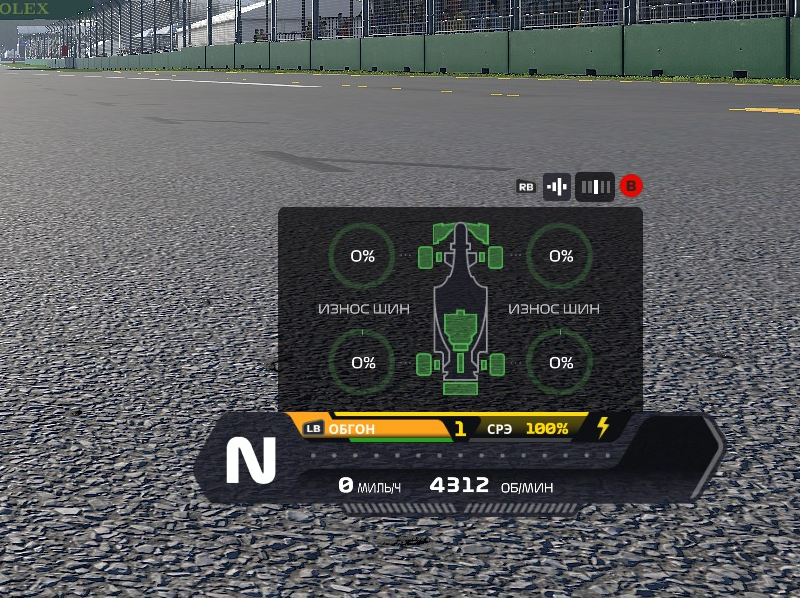
This page is self-explanatory, as it shows tire wear and any damage, obtained on the front fender, rear wing, block or body.
Adjustable rear wing (DRS)
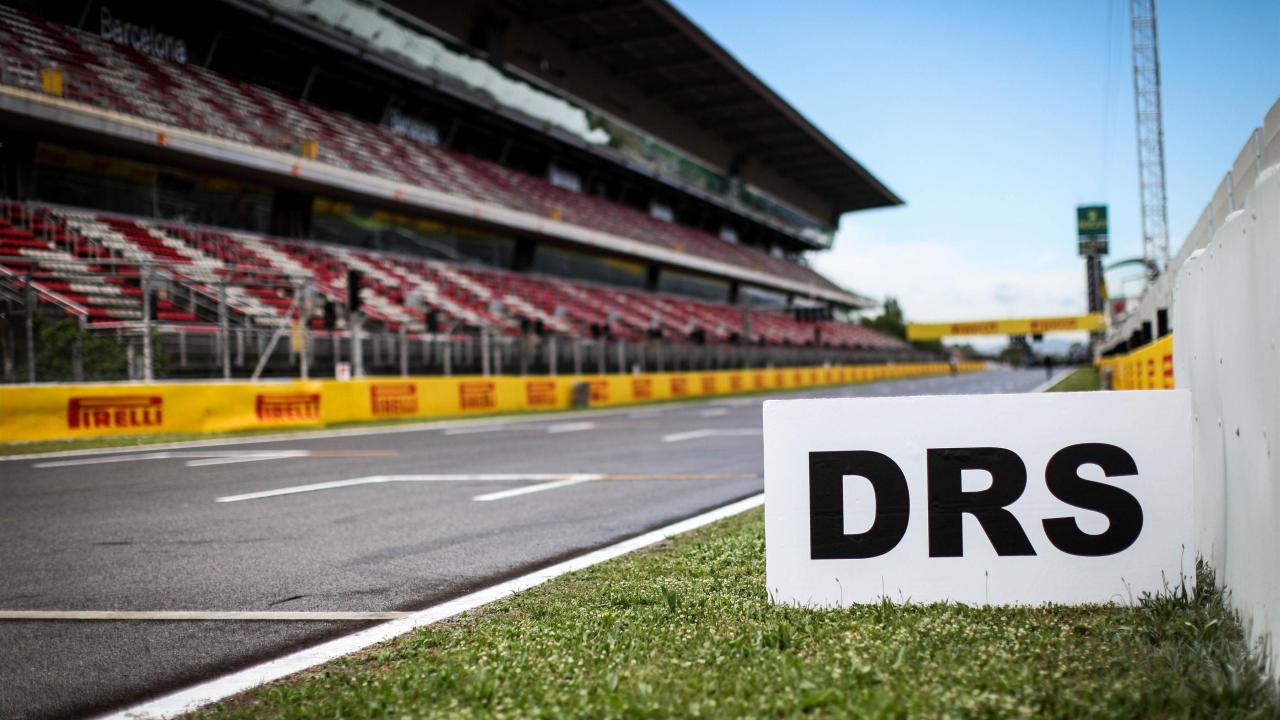
DRS stands for Drag Reduction System. When one car lags behind the other by less than 1 give me a sec, a flap opens in the rear wing. Rear wing helps create downforce in corners, but creates resistance and slows down the car on straight lines. Opening the slot, the car becomes more aerodynamic and faster.
DRS can only be opened at certain points – these are the DRS activation zones – they are always on the straight lines. It is marked as DRS, as in the picture above, and activation can be done, touching the line. The distance to the activation zone is shown on your MFD in orange numbers next to the speed. You need to manually press the desired button. It turns off automatically, when the zone ends. It usually activates on the second lap or so and is not available during the safety car.
Formula 1 cars are now so precisely tuned to control the airflow over the car, when they are close behind another car, they get that, what is called “dirty air”. This place, where the air is so turbulent, that it does not flow over the car in an ideal way. It makes it difficult to overtake, as, when are you close, to overtake the car, your car becomes difficult to drive. DRS must negate the loss of dirty air.
Flags
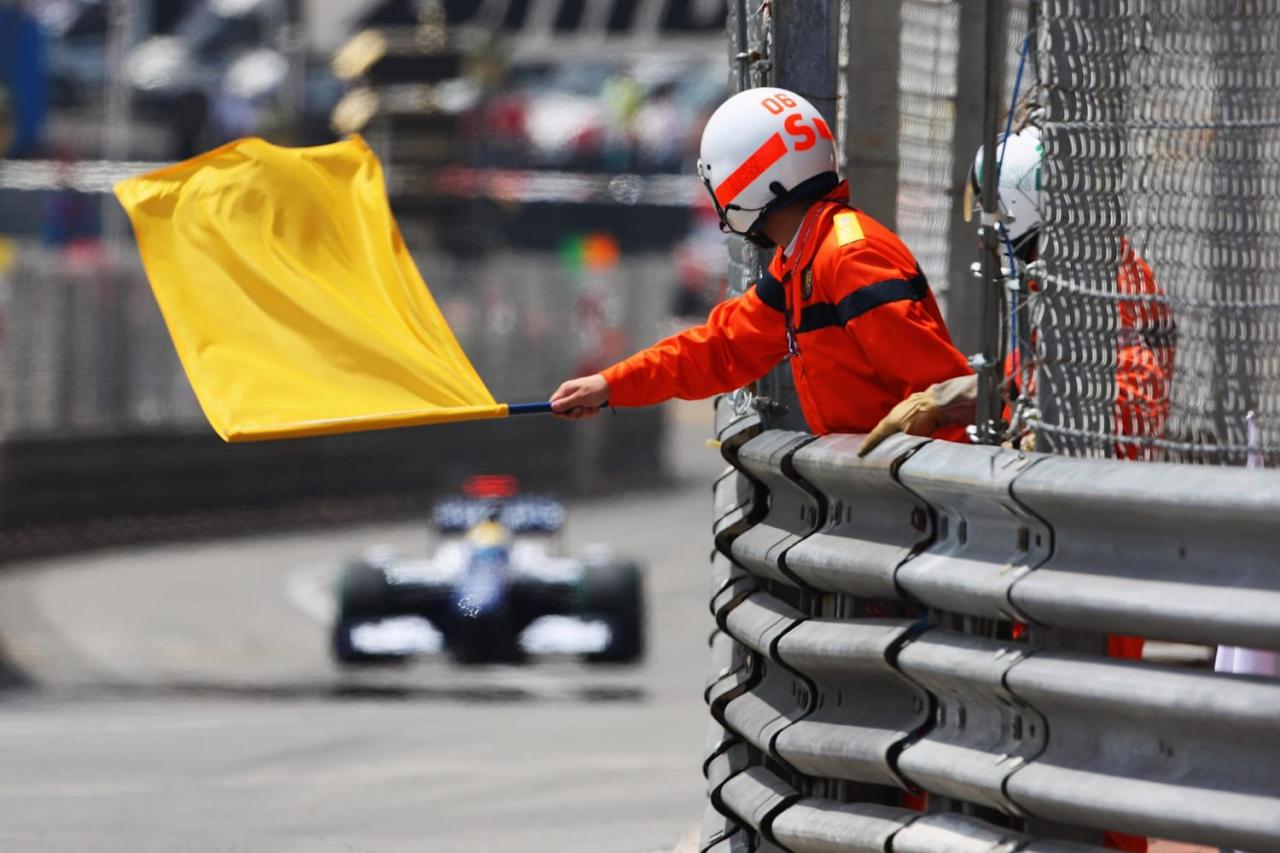
- Yellow flag – means that, that there are debris from cars or a slow car on the track, you must be careful in the yellow flag area, until the judges raise the green flag. Also, overtaking on such a section is prohibited..
- Green flag – means that, what sector free and you can keep on racing.
- Blue flag – means that, that a rider who is a full circle behind the leader of the race should allow a faster car to overtake him, otherwise he will be punished.
- Red flag – means that, that all riders must return to their pits immediately.
- Black flag – means that, that you have been disqualified from the race for any reason.
From Ramhorn

Leave a Reply